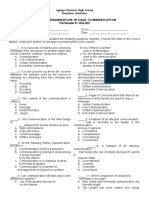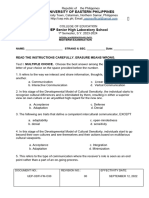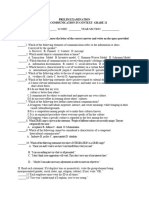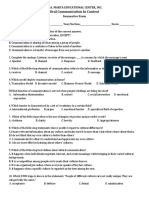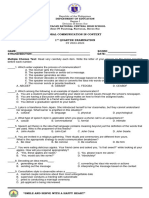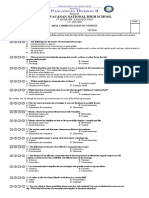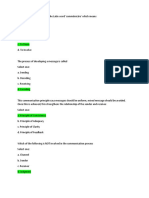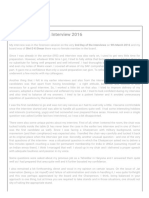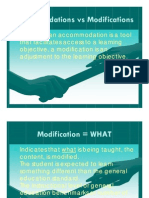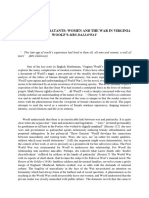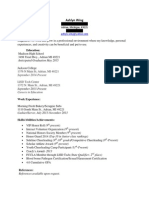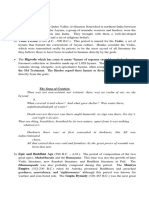100% found this document useful (1 vote)
267 views2 pagesPrelim Exam Oral Communication
This document appears to be a practice exam for an oral communication course. It contains multiple choice questions, fill-in-the-blank, matching, and short answer questions testing students' understanding of key concepts in intercultural communication. Topics covered include intercultural communication, culture, proxemics, communicative competence, cultural identity, speech acts, styles of communication, and strategies for managing interaction across cultures.
Uploaded by
Adonis CarmonaCopyright
© © All Rights Reserved
We take content rights seriously. If you suspect this is your content, claim it here.
Available Formats
Download as DOCX, PDF, TXT or read online on Scribd
100% found this document useful (1 vote)
267 views2 pagesPrelim Exam Oral Communication
This document appears to be a practice exam for an oral communication course. It contains multiple choice questions, fill-in-the-blank, matching, and short answer questions testing students' understanding of key concepts in intercultural communication. Topics covered include intercultural communication, culture, proxemics, communicative competence, cultural identity, speech acts, styles of communication, and strategies for managing interaction across cultures.
Uploaded by
Adonis CarmonaCopyright
© © All Rights Reserved
We take content rights seriously. If you suspect this is your content, claim it here.
Available Formats
Download as DOCX, PDF, TXT or read online on Scribd
/ 2
